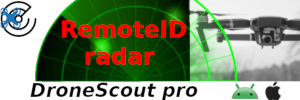- Joined
- Jan 18, 2017
- Messages
- 22
- Reactions
- 18
- Age
- 53
Hi people, as some of you know I´m working on a free video tutorial series of the DJI Go app. Since I want it to be as good as possible, I´m trying to gather as much knowledge as possible and what would be better than asking for help from the vast knowlege here on the forum.
I have now written my text for the next chapter - it´s all about safety. I have not only included my own experience, but also searched the web for things that happened to people and of course checked DJIs safety recommendations. I would highly appreciate your input on this one.
Here is the text, please comment if you have any additional points, think some points are wrong or could be better put - THANKS!!!:
Let´s talk about safety, because this is maybe the single most important thing when it comes to flying a drone.
Not only will it protect you, your aircraft and people around you from damage and injury,
the way people fly with their drones will also determine if flying drones will be totally banned pretty soon, or if we will still be able to fly our aircrafts in 10 years from now.
DJI Aircrafts are so easy to fly, that many people get the feeling they are 100% failsafe. In fact they are just as failsafe as the pilot that flies them.
Honestly – I have seen a group of people standing around a DJI Mavic in a circle – just around 2m from the aircraft – the pilot took off to about 1m height and had the people one by one pushing it down again and to the sides to demonstrate how it keeps height and position.
Guys and girls – always think about the most unlikely event that can happen. What if the drone loses GPS signal, one prop was not properly attached or suddenly breaks.
This absolute unnecessary RISK could cost somebodys eyesight. So make it a habit to think about the worst possible thing that could happen. If you and the people around you are still safe, you are good.
Being a good pilot doesn't mean you are able to fly the most dangerous flights in the most risky conditions.
A good pilot is rather the one that flies safe without any accidents.
The best images and videos are created on the smoothest flights and publishing your breakneck manouvers and fails on youtube doesn't make you a hero but rather makes your violation of law public and you open yourself to prosecution which is in fact pretty stupid.
That said, here are some safety guidelines for flying your DJI aircraft.
To sum things up: DJI aircrafts are incredibly easy to fly, but there are situations that especially new pilots don´t anticipate could ever happen. Be prepared and you are on the safe side.
The points listed should give you a guidance and are not complete. In case you have any suggestions, please leave a comment.
I have now written my text for the next chapter - it´s all about safety. I have not only included my own experience, but also searched the web for things that happened to people and of course checked DJIs safety recommendations. I would highly appreciate your input on this one.
Here is the text, please comment if you have any additional points, think some points are wrong or could be better put - THANKS!!!:
Let´s talk about safety, because this is maybe the single most important thing when it comes to flying a drone.
Not only will it protect you, your aircraft and people around you from damage and injury,
the way people fly with their drones will also determine if flying drones will be totally banned pretty soon, or if we will still be able to fly our aircrafts in 10 years from now.
DJI Aircrafts are so easy to fly, that many people get the feeling they are 100% failsafe. In fact they are just as failsafe as the pilot that flies them.
Honestly – I have seen a group of people standing around a DJI Mavic in a circle – just around 2m from the aircraft – the pilot took off to about 1m height and had the people one by one pushing it down again and to the sides to demonstrate how it keeps height and position.
Guys and girls – always think about the most unlikely event that can happen. What if the drone loses GPS signal, one prop was not properly attached or suddenly breaks.
This absolute unnecessary RISK could cost somebodys eyesight. So make it a habit to think about the worst possible thing that could happen. If you and the people around you are still safe, you are good.
Being a good pilot doesn't mean you are able to fly the most dangerous flights in the most risky conditions.
A good pilot is rather the one that flies safe without any accidents.
The best images and videos are created on the smoothest flights and publishing your breakneck manouvers and fails on youtube doesn't make you a hero but rather makes your violation of law public and you open yourself to prosecution which is in fact pretty stupid.
That said, here are some safety guidelines for flying your DJI aircraft.
- First and foremost: know the laws of the country you fly in. Many have very strict rules, others forbid flying with camera drones completely. Flying against the rules doesn't again mean you are brave, but rather that no ensurance will cover your flight in case of an accident.
NO, I am not talking about an insurance that will cover a destroyed drone.
If something severe happens it might ruin your life, paying for the consequences your whole life and getting arrested too. Think about your drone falling out of the sky onto a road, the driver of a car jerks the steering wheel around and and crashes into a group of pedestrians. One dies and others have injuries they have to live with their whole lives.
Considering this - do you still look up to pilots that fly reckless in any surrounding? - Inspect the aircraft, batteries abd props prior to each flight. Make sure the batteries of aircraft, remote and tablet/smartphone are charged. In cold temperatures: keep the batteries warm and hover for one or two minutes near the home point to warm up aircraft and batteries.
- Calibrate your compass before taking off whenever you change location.
Check your compass values by clicking. Settings – Advanced Settings – Sensors – Compass - Check on the map if your home point has been set and if it is at the right location as soon as you took off.
- Do not fly over or near people and animals. As I already said: think about the most unlikely event that could happen and don´t risk other peoples health for your joy.
Don't do unto others what you would not have done unto you. - Fly in safe areas. Wide open areas are best for practicing.
Avoid flying under obstacles that may block your GPS signal or disturb your compass. - Stay within line of sight. Not only is this a law in many countries, doing this will reduce the risk of losing your drone dramatically.
- If you decide to use your built in camera to navigate – don´t fly sideways or backwards. Flying sideways is one of THE top reasons for crashing your drone.
Always point your camera into the direction you are flying - Having said that: Don´t rely on sensors. While the obstacle avoidance works pretty well, it doesn´t work under all circumstances. For example thin branches of trees are not always detected, but will easily ground your drone pretty quick.
- Stay below 400ft or 120m – in some countries even below 100m.
If you hear the sound of a large helicopter (even in a distance), descend immediately to avoid the possibility of a crash in case it crosses your flight route. - Birds: If there are many birds, for example seagulls or crows at a particular place, think about changing location. Large groups of birds are unpredictable.
If birds attack: fly up! They can't ascend as fast as you can, but they are usually faster in every other direction, especially down. After flying up, leave their territory as quickly as possible. - After updating your firmware or app, take a testflight without flying too far. It is very unlikely, but sometimes your aircraft or app could behave erratic after a firmware upgrade.
- Don´t let other people disturb you while flying – a polite – sorry, I have to concentrate on flying the aircraft to keep safe should keep away curious onlookers.
- Treat your batteries well. LiPo batteries can cause fire – much more than alkaline batteries or other rechargeables. That is something most pilots are not aware of. Protect yourself and your belongings.
- And finally: PRACTICE, PRACTICE, PRACTICE. Even return to home and other functions need to be practiced, beside your regular flying skills. Because if you get in panic it is too late to practice your skills and you will very likely crash.
To sum things up: DJI aircrafts are incredibly easy to fly, but there are situations that especially new pilots don´t anticipate could ever happen. Be prepared and you are on the safe side.
The points listed should give you a guidance and are not complete. In case you have any suggestions, please leave a comment.









